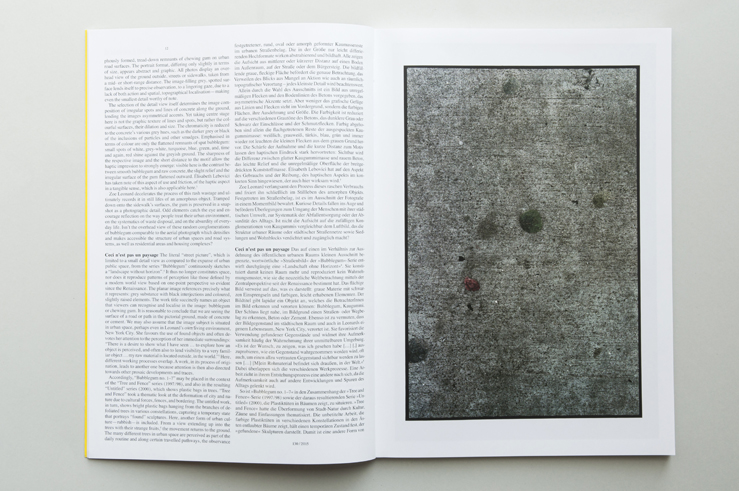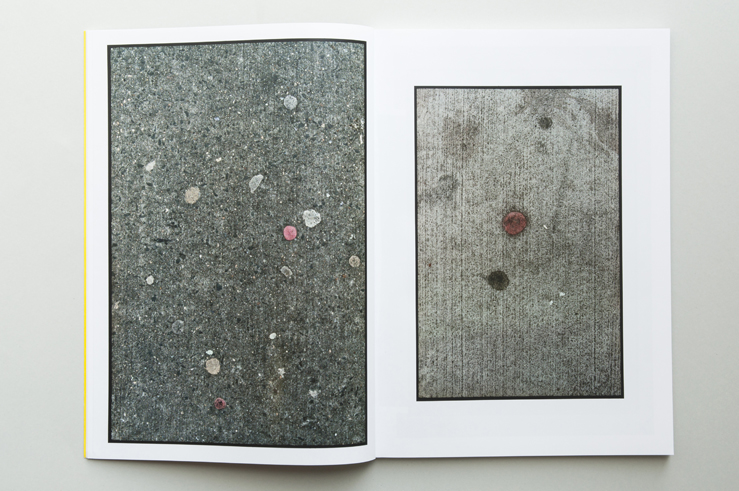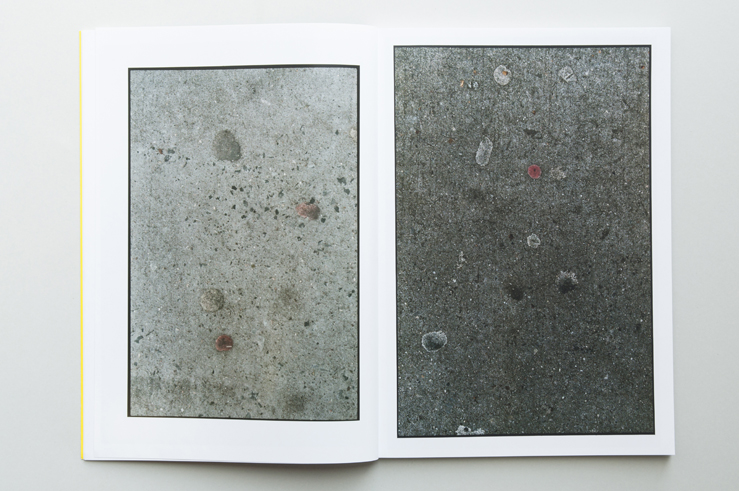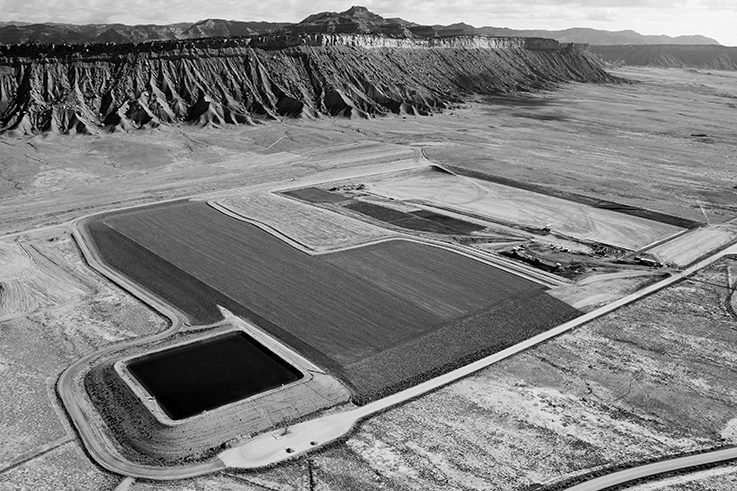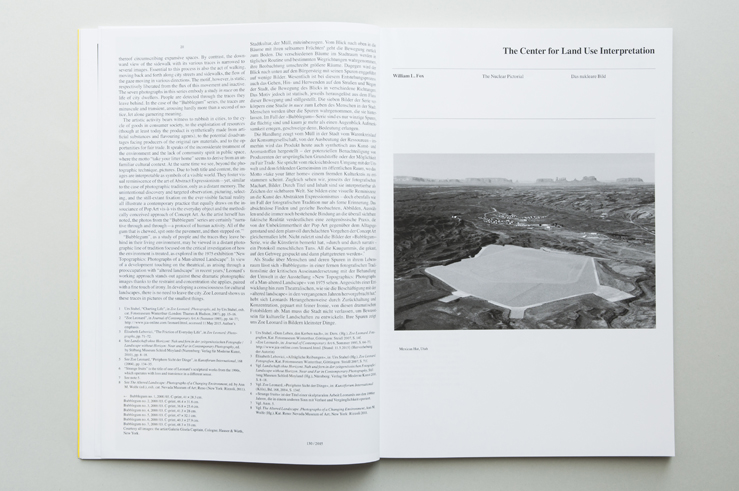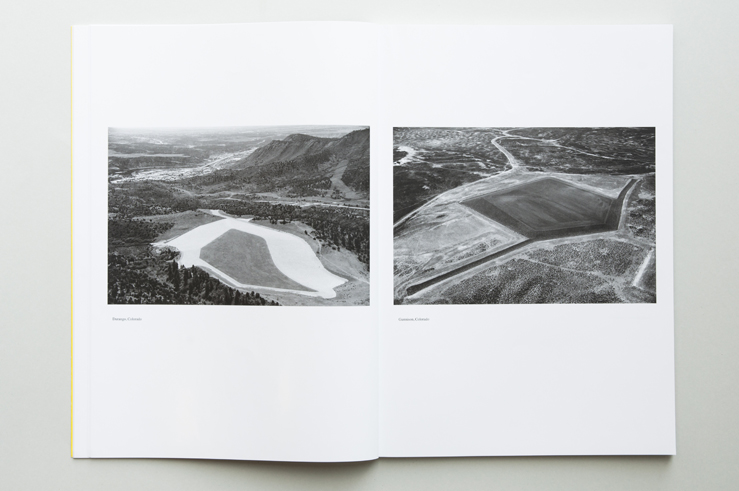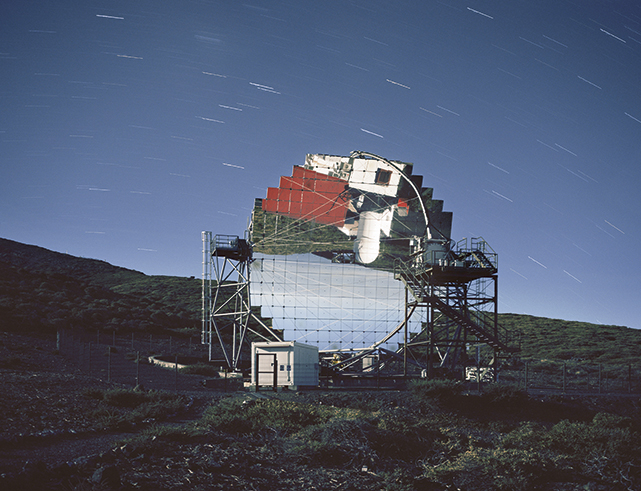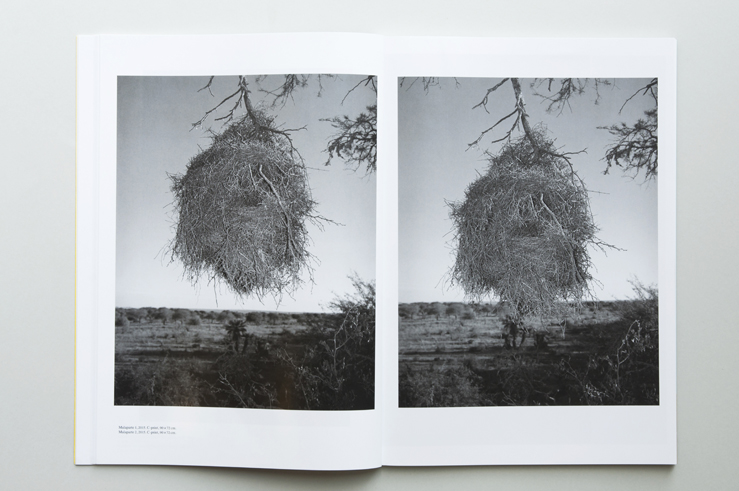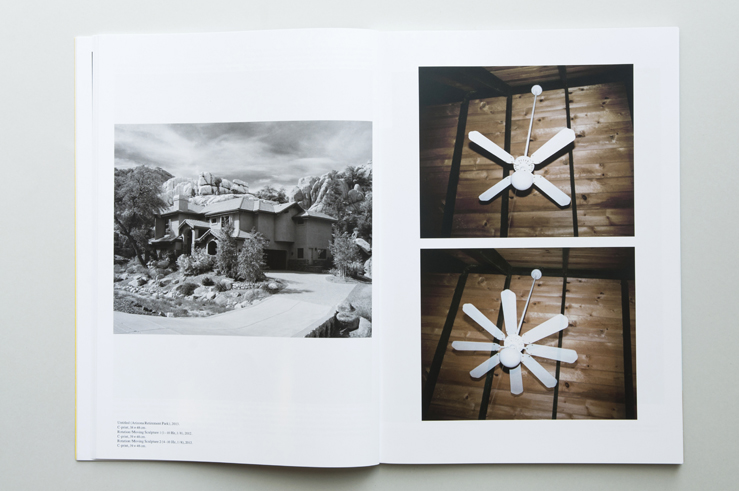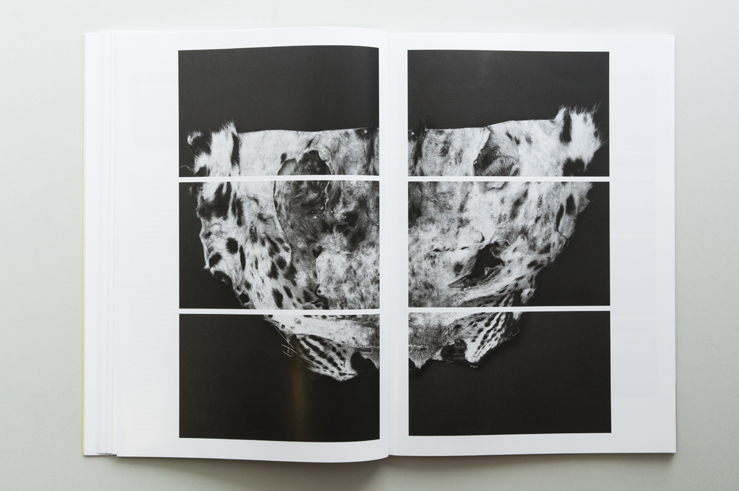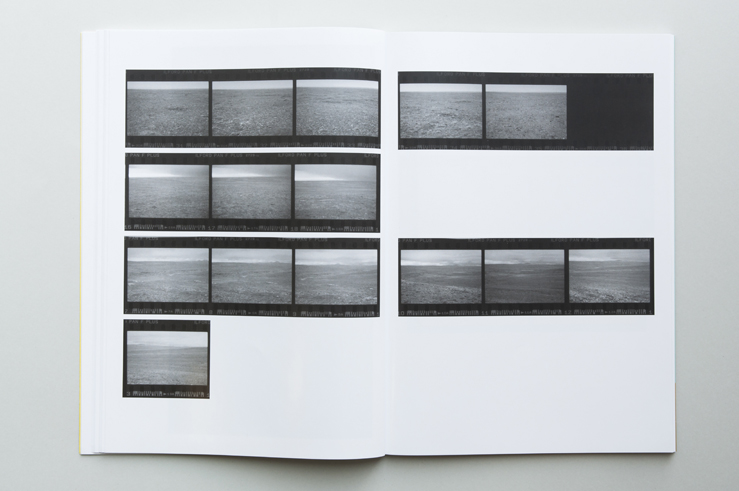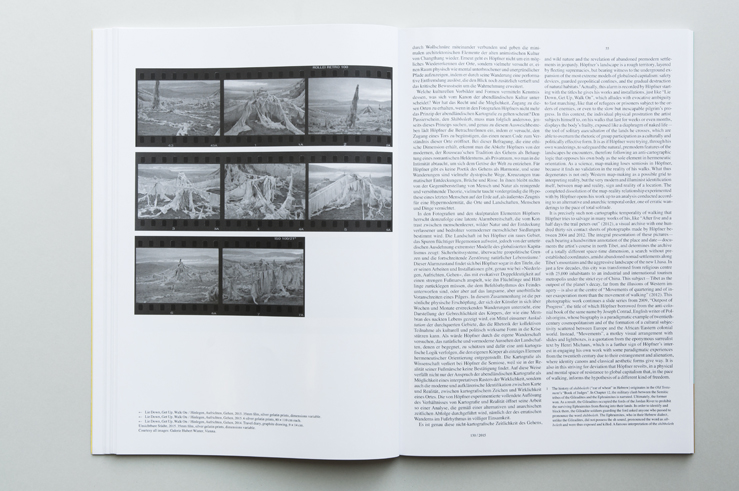Camera Austria International
130 | 2015
- CAROLIN FÖRSTER
Zoe Leonard: Reading Traces: The Proximate - ZOE LEONARD
- WILLIAM L. FOX
The Center for Land Use Interpretation: The Nuclear Pictorial - The Center for Land Use Interpretation (CLUI)
- JENS ASTHOFF
Philip Gaißer: Nests - PHILIP GAIßER
- LUIGI FASSI
Michael Höpfner: Photography as Shibboleth - MICHAEL HÖPFNER
- CINENOVA FEMINIST FILM AND VIDEO DISTRIBUTOR
IRENE REVELL, KERSTIN SCHROEDINGER: Diffracted Landscapes

Preface
Landscape appears to be omnipresent, perhaps since it serves as a validation of one’s own psychogeographies, as a tourism brochure, or even as confirmation of the catastrophic decline of ecological systems. Landscape is involved in an immense production of visibility and, maybe for this very reason, is at risk of disappearing through a kind of over- or double exposure, as suggested by Philip Gaißer’s photograph printed on the cover of this edition of Camera Austria International. The image also demonstrates how landscape is never simply present, but rather in need of construction and reconstruction in order to be understood as an articulation of the present. Gaißer’s work is characteristic of this operation between the acts of documenting and intervening “in which the cultural and civilising interpenetration of the setting manifests”, as Jens Asthoff writes. A production of landscape is likewise evident in Michael Höpfner’s projects: created on his walks through Tibet, often lasting weeks at a time, are sequences of almost horizonless images. Instead of documenting what could be seen, they show what kind of spatial production provides the foundation for staging aspects of landscape. Finally, the bubblegum photographs by Zoe Leonard are also readable as a variation on landscape, whereby part of American cultural history has been deposited or can be reconstructed, being in fact so closely linked to everyday cultural aspects that, in a way, it also tends towards a banal lack of visibility.
We considered it essential to invite The Center for Land Use Interpretation to contribute to this issue. The countless photographs in the Land Use Database also substantiate the idea of landscape as an archive, as a depository for the contaminated residues of a society focused on consumption and exploitation. It is a plethora of images that confronts us with the question of a possible future for landscape.
Camera Austria International 130 | 2015
Preface
Landscape appears to be omnipresent, perhaps since it serves as a validation of one’s own psychogeographies, as a tourism brochure, or even as confirmation of the catastrophic decline of ecological systems. Landscape is involved in an immense production of visibility and, maybe for this very reason, is at risk of disappearing through a kind of over- or double exposure, as suggested by Philip Gaißer’s photograph printed on the cover of this edition of Camera Austria International. The image also demonstrates how landscape is never simply present, but rather in need of construction and reconstruction in order to be understood as an articulation of the present. Gaißer’s work is characteristic of this operation between the acts of documenting and intervening “in which the cultural and civilising interpenetration of the setting manifests”, as Jens Asthoff writes. A production of landscape is likewise evident in Michael Höpfner’s projects: created on his walks through Tibet, often lasting weeks at a time, are sequences of almost horizonless images. Instead of documenting what could be seen, they show what kind of spatial production provides the foundation for staging aspects of landscape. Finally, the bubblegum photographs by Zoe Leonard are also readable as a variation on landscape, whereby part of American cultural history has been deposited or can be reconstructed, being in fact so closely linked to everyday cultural aspects that, in a way, it also tends towards a banal lack of visibility.
Both Philip Gaißer and Michael Höpfner will be participating in an exhibition opening in July 2015, concluding a three-part project on the question of landscape realised by Camera Austria this year in cooperation with the Kunsthaus Graz. It particularly deals with the production of landscape in relation to migration, displacement, war, ethnic and cultural differences—and with the curiously uncertain presence of these conflicts. This presence makes reconstruction work necessary when landscape has become something of an archive of political conflicts whose beholding strongly gives rise to the question as to what can actually be seen or discerned.
It is, not least, for this reason that we considered it essential to invite The Center for Land Use Interpretation to contribute to this issue. The countless photographs in the Land Use Database also substantiate the idea of landscape as an archive, as a depository for the contaminated residues of a society focused on consumption and exploitation. It is a plethora of images that confronts us with the question of a possible future for landscape.
In their second contribution to this year’s Column, Irene Revell and Kerstin Schroedinger from the collective Cinenova Feminist Film and Video Distributor write—with a view to the question of a possible “feminist landscape”—about a “diffracted” gaze that “en-ables a vision that is diffracted, in more ways than one, with all that the material can offer at stake”.
“Resistant Images in Times of Digital Overexposure” reads the working title of Florian Ebner’s concept for the exhibition in the German Pavilion of the Biennale di Venezia 2015. This gives rise to the question of how something like resistance can even still be asserted, especially a resistance of images, when these very images threaten to disappear, are not really visible anymore. Florian Ebner invited Camera Austria to conceptualise a blog with contributions accompanying, commentating, and contextualising the exhibition from May to November. As with the magazine and our exhibition projects, in this blog we will set out to probe the margins of the photographic, but also the non-visual share of image production.
Reinhard Braun
and the Camera Austria Team
June 2015
Cover: Philip Gaißer, Tour d’Horizon 2, 2012. C-print, 39 × 48 cm.
Entries
Forum
Presented by Jeanne Faust
Linda Lebeck
Dani Gherca
Natalia Sidor
Wiebke Schwarzhans
Jan Mammey
Till Megerle
Exhibitions
Feministische Avantgarde der 1970er Jahre, Werke aus der Sammlung Verbund, Wien
Hamburger Kunsthalle
The Photographer’s Gallery, London
Museum moderner Kunst Stiftung Ludwig, Wien
Feminism
Nordstern Videokunstzentrum, Gelsenkirchen
Body Talk: Feminism, Sexuality and the Body in the Work of Six African Women Artists
WIELS, Brüssel
Lunds Konsthall, Lund
FRAC Lorraine, Metz
STEFANIE SEIBOLD
Vincent Meessen / Thela Tendu: Patterns for (Re)cognition
Kunsthalle BaseL
SØNKE GAU
Eine Einstellung zur Arbeit. Ein Projekt von Antje Ehmann und Harun Farocki
Haus der Kulturen der Welt, Berlin
Boston Center for the Arts, Boston
RAINER BELLENBAUM
Not Yet: On the Reinvention of Documentary and the Critique of Modernism
Museo Nacional Centro de Arte Reina Sofía, Madrid
RENATE WÖHRER
Mark Lewis: Above and Below
Le Bal, Paris
MICHÈLE COHEN-HADRIA
Bouchra Khalili: Foreign Office
Palais de Tokyo, Paris
ELLI ARMON AZOULAY
Anna Jermolaewa: Good Times, Bad Times
Zachȩta – National Gallery of Art
WRO Art Center, Wrocław
KRZYSZTOF KOŚCIUCZUK
Aurélien Froment: News from Earth
Badischer Kunstverein, Karlsruhe
Aurélien Froment: Fröbel gefröbelt
Heidelberger Kunstverein
GISLIND NABAKOWSKI
Laurie Simmons: How We See
Jewish Museum, New York
RUPERT GOLDSWORTHY
Ed Atkins: Recent Ouija
Stedelijk Museum, Amsterdam
MAREN LÜBBKE-TIDOW
61st International Short Film Festival Oberhausen: The Third Image – 3D Cinema as Experiment
Oberhausen
JAKUB MAJMUREK
Neïl Beloufa: Hopes for the Best
Gretchen Bender: Total Recall
Schinkel Pavillon, Berlin
Cyprien Gaillard: Where Nature Runs Riot
Sprüth Magers, Berlin
Adrià Julià: Perpetual Monologues Apropos of a Loved Being: Los Angeles 1943 – 1991
Dan Gunn, Berlin
Alex Soth: Songbook
Loock Galerie, Berlin
ANDREAS PRINZING
Landscape on my Mind: Landschaftsfotografie heute. Von Hamish Fulton bis Andreas Gursky
Bank Austria Kunstforum Wien
Michael Höpfner: Lie Down, Get Up, Walk On / Niederliegen, Aufrichten, Gehen
Tresor, Bank Austria Kunstforum Wien
MANISHA JOTHADY
Margherita Spillutini: Archiv der Räume
Oberösterreichische Landesgalerie Linz
Die Photographische Sammlung / SK Stiftung Kultur, Köln
WALTER SEIDL
Barbara Kasten: Stages
Institute of Contemporary Art, University of Pennsylvania, Philadelphia
NICOLAS LINNERT
Gregor Neuerer: Various Tones
Cathouse FUNeral, New York
RACHEL BAUM
Seiichi Furuya: Gravitation. Fotografien 1978 – 1994
Technische Sammlungen Dresden
Seiichi Furuya: Dresden 1984. Was wir sehen.
Kunsthaus Dresden
Seiichi Furuya: Erinnerung – Kontrolle
Galerie für Zeitgenössische Kunst Leipzig
FALK HABERKORN
Krüger & Pardeller: HOMO FABER – Ein räumliches Hörspiel in drei Teilen
21er Haus, Wien
ANETTE FREUDENBERGER
Heimatfotografie in Österreich. Eine politisierte Sicht von Bauern und Skifahrern
Photoinstitut Bonartes, Wien
ULRIKE MATZER
Andrea Fraser
Musem der Moderne Salzburg
YUKI HIGASHINO
56th Venice Biennale: All the World’s Futures
Various Venues, Venice
FATOŞ ÜSTEK
Books
THE REVOLVING BOOKSHELF
Magazines About One Person. USSR im Bau und Re-Magazine
»Hester. Depressed«, Re-Magazine. A magazine about one person
Heft 12, Winter 2004 – 2005
Artimo/Gijs Stork, Amsterdam
»Der Industriegigant und seine Erbauer. Photo-Skizze von M. Alpert und A. Smoljan«,
USSR im Bau. Illustrierte Monatsschrift
3. Jg., Heft 1, 1932
Vereinigung der Staatsverlage RSFSR, Moskau
JAN WENZEL
Five Issues of Studio International
Raven Row, London
HANS-JÜRGEN HAFNE
Regine Petersen: Find a Fallen Star
Kehrer Verlag, Heidelberg / Berlin
MARGIT NEUHOLD
Neuerfindung der Fotografie. Hans Danuser – Gespräche, Materialien, Analysen
De Gruyter, Berlin / Boston
JÖRG SCHELLER
Imprint
Publisher: Reinhard Braun
Owner: Verein CAMERA AUSTRIA. Labor für Fotografie und Theorie.
Lendkai 1, 8020 Graz, Österreich
Editors: Margit Neuhold, Christina Töpfer, Rebecca Wilton
Tobias Neumann (Intern).
Translators: Dawn Michelle d’Atri, Eva Dewes, Emily Ligniti, Peter McCavana, Wilfried Prantner.
English proofreading: Dawn Michelle d’Atri
Acknowledgement: Jens Asthoff, Steven Ball, Francesca Buccaro, Catarina Boieiro, Anja Casser, Matthew Coolidge, David Cossi, Jocelyn Davis, Luigi Fassi, Jeanne Faust, Carolin Förster, Christine Forstner, William L. Fox, Philip Gaißer, Dani Gherca, Hans Gremmen, Yuki Higashino, Michael Höpfner, Gabriele Hofer-Hagenauer, Marco Kamber, Jill Katz, Linda Lebeck, Jan Mammey, Till Megerle, Marie Mense, Annabel Nicolson, Peter Puklus, Wiebke Schwarzhans, Stefanie Seibold, Natalia Sidor, Susanne Susanka, Aurora Tang, Ole A. H. Truderung.
Copyright © 2015
All rights reserved. No parts of this magazine may be reproduced without publisher’s permission.
Camera Austria International does not assume any responsibility for submitted texts and original materials.
ISBN 978-3-902911-17-9
ISSN 1015 1915
GTIN 4 19 23106 1600 5 00130

